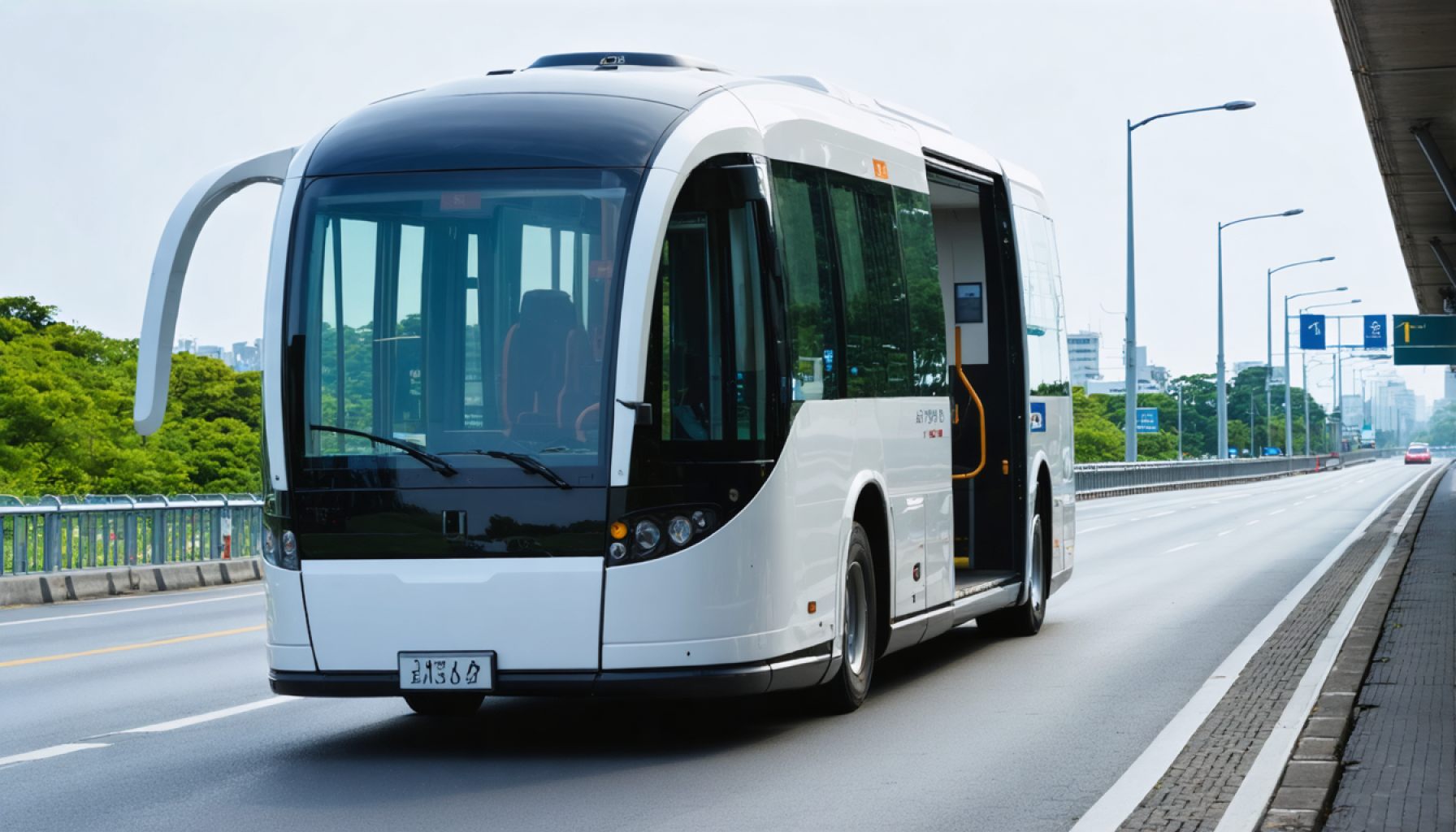- Komatsu, once reliant on conventional transit, is at the forefront of a public transportation revolution with autonomous buses.
- TIER IV has achieved Level 4 certification, allowing its buses to navigate autonomously between Komatsu Station and the airport.
- Collaborations with BOLDLY, Aisan Technology, and Sompo Japan contributed to this success, leveraging tools like Autoware software and 3D mapping.
- Over 18,000 passengers have already used the autonomous bus service launched in March 2024, highlighting its smooth integration into daily life.
- The initiative underscores that autonomous transit is a present-day reality, reshaping the urban landscape and commuter experience.
- TIER IV’s commitment to open-source technology leads the charge in transforming the industry towards greater safety, convenience, and efficiency.
Against the industrious backdrop of Komatsu, a quiet revolution in public transportation has emerged. The city’s landscape, once defined by conventional transit systems, now witnesses the sunrise of autonomous technology steering its buses into uncharted territory. TIER IV, a trailblazer in autonomous vehicle technology, has etched its name in the annals of innovation by securing Level 4 certification for its autonomous bus service. This certification, a critical benchmark in the world of self-driving technology, boldly allows the bus to navigate a predetermined route from the bustling Komatsu Station to the gateways of Komatsu Airport.
Such advancement doesn’t occur in isolation. It is the result of a harmonious collaboration between TIER IV and local entities, such as BOLDLY and Aisan Technology, cemented by the intellect of Sompo Japan. In 2022, a strategic partnership germinated, nurturing the seeds of what would become an autonomous transport phenomenon. Throughout 2023, this coalition harnessed the potential of cutting-edge tools, from TIER IV’s Minibus and the Autoware open-source software to Aisan’s precise 3D mapping and BOLDLY’s vigilant remote monitoring systems.
The journey from vision to reality was rigorous, yet promising. March 2024 marked a pivotal moment with the launch of a full-fledged, paid autonomous bus service. Komatsu’s citizens embraced this newfound mode of travel, as evidenced by over 18,000 passengers benefiting from its seamless connectivity between station and airport. The bus maneuvers with intelligence—detecting vehicles, deciphering pedestrian movements, all while adhering to the strict environmental protocols set by regulatory bodies.
This remarkable feat underscores a critical takeaway: Autonomous transit is not just a possibility; it is a reality steadily integrating into the urban infrastructure. TIER IV’s endeavor illustrates that when innovation meets collaboration, the potential to reshape our daily commute transforms from a distant aspiration into tangible progress.
The dawn of autonomous buses in Komatsu poignantly symbolizes more than technological triumph—it heralds a future where intelligent vehicles redefine convenience, safety, and efficiency. TIER IV, with its profound commitment to open-source development, is not just driving vehicles but leading an entire industry into a daring new era. As research and development continue to accelerate, the road ahead appears laden with promise, echoing the cadence of progress in every autonomous journey taken.
In this evolving narrative of autonomous travel, the championing of open-source platforms and collaboration will light the path. Through collective ingenuity, we witness a vision becoming reality: a smarter, more interconnected world of transit that stands as a testament to human ingenuity and bold ambition.
Autonomous Buses Revolutionize Urban Transit: What You Need to Know Now
Introduction
Komatsu, a city in Japan, has taken a significant leap in urban transportation by launching an autonomous bus service that runs between Komatsu Station and Komatsu Airport. This innovation, spearheaded by TIER IV, has earned Level 4 certification, meaning these buses can operate autonomously without human intervention on a specific route. This development marks an exciting milestone in the expansion of autonomous transportation.
Autonomous Vehicle Technology: An Overview
1. Level 4 Certification: This denotes a stage where the vehicle can handle all driving tasks in specific conditions without the need for human assistance, fundamentally reshaping public transit dynamics.
2. Collaboration and Innovation: The success of the service in Komatsu is attributed to the collaborative efforts of TIER IV with partners like BOLDLY, Aisan Technology, and Sompo Japan. Innovations include:
– TIER IV’s Minibus: An integral player in the autonomous operation.
– Autoware Open-Source Software: Crucial in driving autonomous technology.
– Aisan’s 3D Mapping: Essential for precise navigation.
– BOLDLY’s Remote Monitoring: Ensures safety and efficiency.
Pressing Questions and Answers
– How does the technology ensure safety?
The buses are equipped with sensors and software capable of detecting vehicles and pedestrians, adhering to stringent safety protocols.
– Does this technology reduce carbon emissions?
Autonomous buses often employ electric technology, contributing to sustainable and environmentally friendly public transport solutions.
Real-World Use Cases and Insights
– Passenger Adoption: Over 18,000 passengers have experienced the convenience and efficiency of this service, highlighting a shift towards acceptance and trust in autonomous technology.
– Benefits of Autonomous Transit: These include enhanced safety, reduction of human error, and seamless integration into existing urban transport networks.
Market Forecasts and Industry Trends
– Growth in Autonomous Vehicles: The global autonomous vehicle market is expected to grow significantly, with more cities looking to integrate similar technologies to improve public transport.
– Open-Source Collaboration: TIER IV’s use of Autoware, an open-source platform, indicates a trend towards community-driven development in the field of autonomous vehicles.
Challenges and Limitations
– Infrastructure Requirements: The successful implementation of autonomous vehicles demands robust infrastructure, including reliable mapping and network capabilities.
– Regulatory Hurdles: Navigating existing regulations and creating new policies for autonomous vehicles remain challenges that need addressing.
Conclusion and Actionable Recommendations
– Explore Open-Source Platforms: Stakeholders in the autonomous vehicle industry should consider adopting open-source solutions to foster innovation and collaboration.
– Advocate for Supportive Infrastructure: Governments and urban planners should invest in infrastructure that supports the deployment of autonomous vehicles.
– Engage in Continuous Learning: Keep abreast of developments in autonomous technology through trusted sources and platforms like TIER IV.
Komatsu’s autonomous bus service sets a precedent for the future of urban transport, blending innovation with practicality to pave the way for smarter, safer cities.
